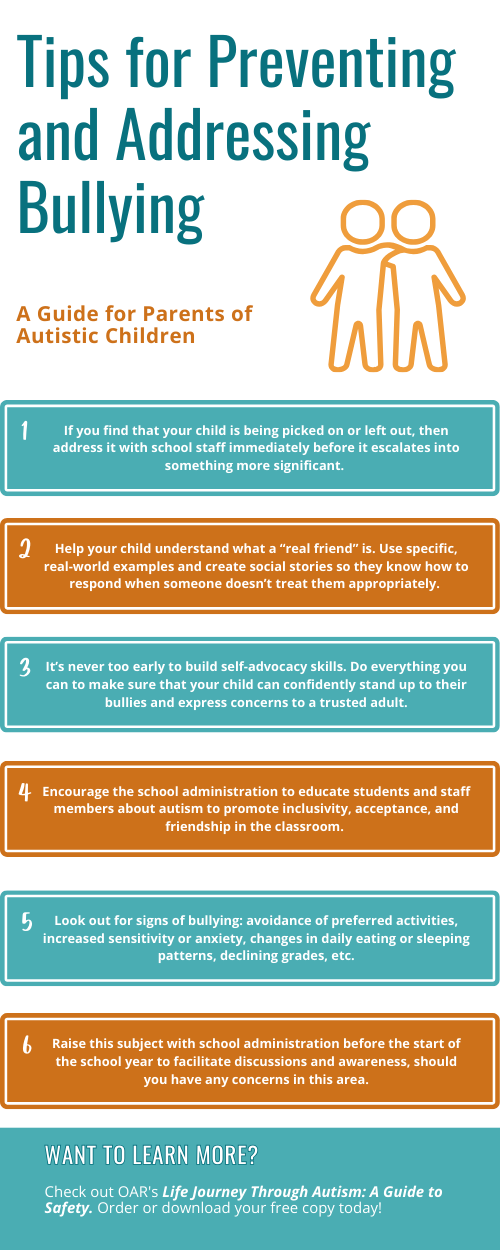Autism and Bullies: Tips for Preventing and Addressing Bullying
September 06, 2023
Bullying is defined as “unwanted, aggressive behavior among school-aged children that involves a real or perceived power imbalance” (U.S. Department of Health and Human Services, 2014). Bullying peaks in the middle school years and can take many different forms: physical, verbal, psychological, and even cyber. Given that adolescents with autism have difficulty understanding social rules and norms, they are more vulnerable to insidious (“relational”) types of bullying, such as exclusion from peer groups. Even after several incidents have occurred, they still may not notice that they are being bullied.
It is important to note that bullying is not limited to peer-to-peer relationships. Sadly, there are adults who sometimes abuse positions of trust and engage in bullying behavior out of ignorance or plain lack of acceptance. As you teach your child about relationships and friendship, be mindful of teaching what “trusted adult” means, who they are, and most importantly, what makes them trustworthy.
1) Remember that bullying doesn’t just happen. It is preceded by teasing, ridiculing, and testing of rules, behavior that often gets brushed aside. If you find that your child is being picked on or left out, then address it with school staff immediately before it escalates into something more significant.
2) Help your child understand what a “real friend” is. Use specific, real-world examples and create social stories so they know how to respond when someone doesn’t treat them appropriately.
3) It’s never too early to build self-advocacy skills. Do everything you can to make sure that your child can confidently stand up to their bullies and express concerns to a trusted adult, regardless of where they are.
4) Peers are less likely to bully if they understand what autism is. Encourage the school administration to educate students and staff members about autism and promote inclusivity, acceptance, and friendship in the classroom. OAR’s Kit for Kids is a great resource for promoting autism acceptance!
5) Be attuned to the signs of bullying: avoidance of preferred activities, increased sensitivity or anxiety, changes in daily eating or sleeping patterns, declining grades, appearance of cuts or bruises, and suicidal ideation.
6) Raise this subject with school administration before the start of the school year to facilitate discussions and awareness, should you have any concerns in this area.
Advice from a Teacher: “A seventh grader with autism who is very passive had been pulling his pants down in class. We initially thought he was being naughty, but soon found out that another student had been telling him to pull his pants down. I think teachers need to be more aware of their students and consider the reasons why they might be doing something out of the ordinary, and parents should work with their teen’s support professionals to create social stories about being your own person and making your own decisions.”
Advice from a Parent: “Teach your adolescent how to distinguish when someone is taking advantage of you—borrowing money and not paying it back, asking for favors but not reciprocating, baiting you so others laugh at your naiveté, or asking you to do inappropriate and illegal things in exchange for friendship. Teach your child what a real friendship looks like.”

This post was adapted from Life Journey Through Autism: A Guide to Safety. Click here to order or download the guide.